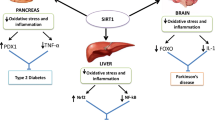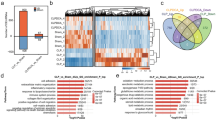Abstract
Hepcidin is an antimicrobial peptide hormone that plays a central role in the metabolism of iron and its expression in the liver can be induced through two major pathways: the inflammatory pathway, mainly via IL-6; and the iron-sensing pathway, mediated by BMP-6. GATA-proteins are group of evolutionary conserved transcriptional regulators that bind to the consensus motif—WGATAR—in the promoter region. In hepatoma cells, GATA-proteins 4 and 6 in conjunction with the co-factor friend of GATA (FOG) were shown to modulate the transcription of HAMP. However, it is unclear as to which of the GATA-proteins drive the expression of HAMP in vivo. In this study, using in vitro and in vivo approaches, we investigated the relevance of GATA and FOG proteins in the expression of hepcidin following treatment with IL-6 and BMP-6. We found that treatment of Huh7 cells with either IL-6 or BMP-6 increased the HAMP promoter activity. The HAMP promoter activity following treatment with IL-6 or BMP-6 was further increased by co-transfection of the promoter with GATA proteins 4 and 6. However, co-transfection of the HAMP promoter with FOG proteins 1 or 2 repressed the promoter response to treatments with either IL-6 or BMP-6. The effects of both GATA and FOG proteins on the promoter activity in response to IL-6 or BMP-6 treatment were abrogated by mutation of the GATA response element—TTATCT—in the HAMP promoter region −103/−98. In vivo, treatment of mice with lipopolysaccharide led to a transient increase of Gata-6 expression in the liver that was positively correlated with the expression of hepcidin. Our results indicate that during inflammation GATA-6 is up-regulated in concert with hepcidin while GATA-4 and FOG (1 and 2) are repressed.








Similar content being viewed by others
References
Afshar K, McLorie G et al (2004) Outcome of small residual stone fragments following shock wave lithotripsy in children. J Urol 172(4 Pt 2):1600–1603
Andrews NC (2004) Anemia of inflammation: the cytokine-hepcidin link. J Clin Investig 113(9):1251–1253
Bagu ET, Santos MM (2011) Friend of GATA suppresses the GATA-induced transcription of hepcidin in hepatocytes through a GATA-regulatory element in the HAMP promoter. J Mol Endocrinol 47(3):299–313
Batmunkh C, Krajewski J et al (2006) Erythropoietin production: molecular mechanisms of the antagonistic actions of cyclic adenosine monophosphate and interleukin-1. FEBS Lett 580(13):3153–3160
Blobel GA, Nakajima T et al (1998) CREB-binding protein cooperates with transcription factor GATA-1 and is required for erythroid differentiation. Proc Natl Acad Sci USA 95(5):2061–2066
Cantor AB, Katz SG et al (2002) Distinct domains of the GATA-1 cofactor FOG-1 differentially influence erythroid versus megakaryocytic maturation. Mol Cell Biol 22(12):4268–4279
Casanovas G, Mleczko-Sanecka K et al (2009) Bone morphogenetic protein (BMP)-responsive elements located in the proximal and distal hepcidin promoter are critical for its response to HJV/BMP/SMAD. J Mol Med (Berl) 87(5):471–480
Constante M, Jiang W et al (2006) Distinct requirements for Hfe in basal and induced hepcidin levels in iron overload and inflammation. Am J Physiol Gastrointest Liver Physiol 291(2):G229–G237
Constante M, Wang D et al (2007) Repression of repulsive guidance molecule C during inflammation is independent of Hfe and involves tumor necrosis factor-alpha. Am J Pathol 170(2):497–504
Crispino JD, Lodish MB et al (1999) Use of altered specificity mutants to probe a specific protein–protein interaction in differentiation: the GATA-1:FOG complex. Mol Cell 3(2):219–228
Dame C, Sola MC et al (2004) Hepatic erythropoietin gene regulation by GATA-4. J Biol Chem 279(4):2955–2961
Divine JK, Staloch LJ et al (2004) GATA-4, GATA-5, and GATA-6 activate the rat liver fatty acid binding protein gene in concert with HNF-1alpha. Am J Physiol Gastrointest Liver Physiol 287(5):G1086–G1099
Hanninen MM, Haapasalo J et al (2009) Expression of iron-related genes in human brain and brain tumors. BMC Neurosci 10:36
Haveri H, Ashorn M et al (2009) Enhanced expression of transcription factor GATA-4 in inflammatory bowel disease and its possible regulation by TGF-beta1. J Clin Immunol 29(4):444–453
Holmes M, Turner J et al (1999) hFOG-2, a novel zinc finger protein, binds the co-repressor mCtBP2 and modulates GATA-mediated activation. J Biol Chem 274(33):23491–23498
Huang H, Constante M et al (2009) Contribution of STAT3 and SMAD4 pathways to the regulation of hepcidin by opposing stimuli. Blood 113(15):3593–3599
Island ML, Fatih N et al (2011) GATA-4 transcription factor regulates hepatic hepcidin expression. Biochem J 437(3):477–482
Isoda M, Hanawa H et al (2010) Expression of the peptide hormone hepcidin increases in cardiomyocytes under myocarditis and myocardial infarction. J Nutr Biochem 21(8):749–756
Jiang W, Constante M et al (2008) Anemia upregulates lipocalin 2 in the liver and serum. Blood Cells Mol Dis 41(2):169–174
Katz SG, Cantor AB et al (2002) Interaction between FOG-1 and the corepressor C-terminal binding protein is dispensable for normal erythropoiesis in vivo. Mol Cell Biol 22(9):3121–3128
Kautz L, Besson-Fournier C et al (2011) Iron overload induces BMP6 expression in the liver but not in the duodenum. Haematologica 96(2):199–203
Kulaksiz H, Fein E et al (2008) Pancreatic beta-cells express hepcidin, an iron-uptake regulatory peptide. J Endocrinol 197(2):241–249
La Ferla K, Reimann C et al (2002) Inhibition of erythropoietin gene expression signaling involves the transcription factors GATA-2 and NF-kappaB. FASEB J 16(13):1811–1813
Layoun A, Huang H et al (2012) Toll-like receptor signal adaptor protein MyD88 is required for sustained endotoxin-induced acute hypoferremic response in mice. Am J Pathol 180(6):2340–2350
Machida K, Cheng KT et al (2006) Hepatitis C virus induces toll-like receptor 4 expression, leading to enhanced production of beta interferon and interleukin-6. J Virol 80(2):866–874
Matsuda K, Kobune Y et al (1994) Expression of GATA-binding transcription factors in rat hepatocytes. FEBS Lett 353(3):269–272
Merle U, Fein E et al (2007) The iron regulatory peptide hepcidin is expressed in the heart and regulated by hypoxia and inflammation. Endocrinology 148(6):2663–2668
Milward E, Johnstone D et al (2007) The nexus of iron and inflammation in hepcidin regulation: SMADs, STATs, and ECSIT. Hepatology 45(1):253–256
Miranda CJ, Makui H et al (2004) Contributions of beta2-microglobulin-dependent molecules and lymphocytes to iron regulation: insights from HfeRag1(−/−) and beta2mRag1(−/−) double knock-out mice. Blood 103(7):2847–2849
Montosi G, Corradini E et al (2005) Kupffer cells and macrophages are not required for hepatic hepcidin activation during iron overload. Hepatology 41(3):545–552
Nakashima K, Yanagisawa M et al (1999) Synergistic signaling in fetal brain by STAT3-Smad1 complex bridged by p300. Science 284(5413):479–482
Nicolas G, Viatte L et al (2002) Hepcidin, a new iron regulatory peptide. Blood Cells Mol Dis 29(3):327–335
Obara N, Suzuki N et al (2008) Repression via the GATA box is essential for tissue-specific erythropoietin gene expression. Blood 111(10):5223–5232
Peyssonnaux C, Zinkernagel AS et al (2006) TLR4-dependent hepcidin expression by myeloid cells in response to bacterial pathogens. Blood 107(9):3727–3732
Pietrangelo A (2006) Molecular insights into the pathogenesis of hereditary haemochromatosis. Gut 55(4):564–568
Ramos E, Kautz L et al (2011) Evidence for distinct pathways of hepcidin regulation by acute and chronic iron loading in mice. Hepatology 53(4):1333–1341
Robert NM, Tremblay JJ et al (2002) Friend of GATA (FOG)-1 and FOG-2 differentially repress the GATA-dependent activity of multiple gonadal promoters. Endocrinology 143(10):3963–3973
Roetto A, Papanikolaou G et al (2003) Mutant antimicrobial peptide hepcidin is associated with severe juvenile hemochromatosis. Nat Genet 33(1):21–22
Schwarz P, Kubler JA, et al (2012) Hepcidin is localised in gastric parietal cells, regulates acid secretion and is induced by Helicobacter pylori infection. Gut 61(2):193–201
Svensson EC, Huggins GS et al (2000) A functionally conserved N-terminal domain of the friend of GATA-2 (FOG-2) protein represses GATA4-dependent transcription. J Biol Chem 275(27):20762–20769
Tremblay JJ, Viger RS (1999) Transcription factor GATA-4 enhances Mullerian inhibiting substance gene transcription through a direct interaction with the nuclear receptor SF-1. Mol Endocrinol 13(8):1388–1401
Tremblay JJ, Viger RS (2001) GATA factors differentially activate multiple gonadal promoters through conserved GATA regulatory elements. Endocrinology 142(3):977–986
Tremblay JJ, Robert NM et al (2001) Modulation of endogenous GATA-4 activity reveals its dual contribution to Mullerian inhibiting substance gene transcription in Sertoli cells. Mol Endocrinol 15(9):1636–1650
Vecchi C, Montosi G et al (2009) ER stress controls iron metabolism through induction of hepcidin. Science 325(5942):877–880
Vecchi C, Montosi G et al (2010) Huh-7: a human “hemochromatotic” cell line. Hepatology 51(2):654–659
Verga Falzacappa MV, Vujic Spasic M et al (2007) STAT3 mediates hepatic hepcidin expression and its inflammatory stimulation. Blood 109(1):353–358
Verga Falzacappa MV, Casanovas G et al (2008) A bone morphogenetic protein (BMP)-responsive element in the hepcidin promoter controls HFE2-mediated hepatic hepcidin expression and its response to IL-6 in cultured cells. J Mol Med 86(5):531–540
Vyas P, McDevitt MA et al (1999) Different sequence requirements for expression in erythroid and megakaryocytic cells within a regulatory element upstream of the GATA-1 gene. Development 126(12):2799–2811
Wang RH, Li C et al (2005) A role of SMAD4 in iron metabolism through the positive regulation of hepcidin expression. Cell Metab 2(6):399–409
Wrighting DM, Andrews NC (2006) Interleukin-6 induces hepcidin expression through STAT3. Blood 108(9):3204–3209
Wu TT, Tai YT et al (2013) GATA-2 transduces LPS-induced il-1beta gene expression in macrophages via a toll-like receptor 4/MD88/MAPK-dependent mechanism. PLoS ONE 8(8):e72404
Acknowledgments
We are grateful to Dr Robert Viger for the GATA (1, 3, 4, and 6) and FOG (1 and 2) expression vectors, and Dr Jacques Tremblay for the pXP1 luciferase reporter plasmid. We also thank Drs Muhammad Zafarullah and Richard Betrand (CRCHUM) for their technical help and advice.
Disclosure
The authors declare there is no conflict of interest that would prejudice their impartiality. ETB developed, designed and executed the experiments, collected, analyzed and interpreted the data and then wrote the manuscript. AL performed the animal experiments. MMS participated in the data discussions and writing of the manuscript.
Funding
This work was supported by grants from the Canadian Institutes of Health Research (CIHR, Grant No. MOP123246) and Natural Sciences and Engineering Research Council of Canada (NSERC, Grant No. 412326-2011) to MMS. ETB is a recipient of Post-doctoral fellowship grants from the Institut du Cancer de Montréal, CHUM and the Centre de Recherche du CHUM, Université de Montréal QC, Canada. AL is a recipient of a PhD scholarship from the NSERC. MMS is a recipient of the Research Scholarship (Senior) from Fonds de recherche du Québec—Santé (FRQS).
Author information
Authors and Affiliations
Corresponding author
Electronic supplementary material
Below is the link to the electronic supplementary material.
10534_2013_9683_MOESM1_ESM.pptx
Supplementary material 1 The fold change in mRNA level of both hepcidin in the mouse liver following treatment with LPS. Hepatic mRNA levels of hepcidin in wild-type (Wt) mice were determined 1.5, 3, 6, 12 and 24 h after treatment with LPS. Mice in the control group (time = 0) were injected a sterile saline solution. The data is presented as mean ± SEM with n = 4 mice/group. Results of each time point are representative of three independent experiments performed. NS, ** (P ≤ 0.05); *(< 0.01) are used in reference to post treatments groups 1.5, 3, and 6 h respectively when compared with the control group (0 h). (PPTX 48 kb)
Rights and permissions
About this article
Cite this article
Bagu, E.T., Layoun, A., Calvé, A. et al. Friend of GATA and GATA-6 modulate the transcriptional up-regulation of hepcidin in hepatocytes during inflammation. Biometals 26, 1051–1065 (2013). https://doi.org/10.1007/s10534-013-9683-6
Received:
Accepted:
Published:
Issue Date:
DOI: https://doi.org/10.1007/s10534-013-9683-6




